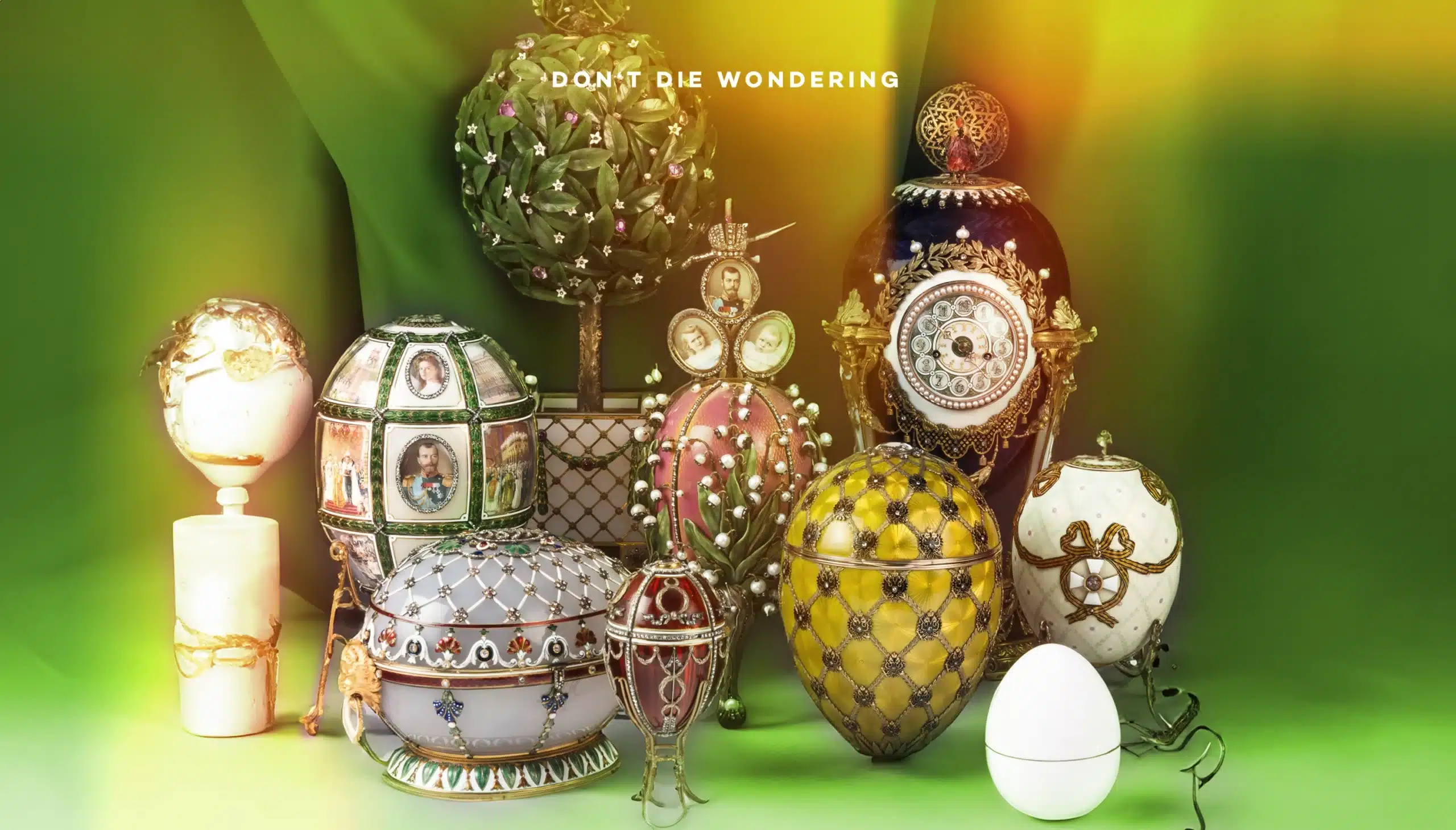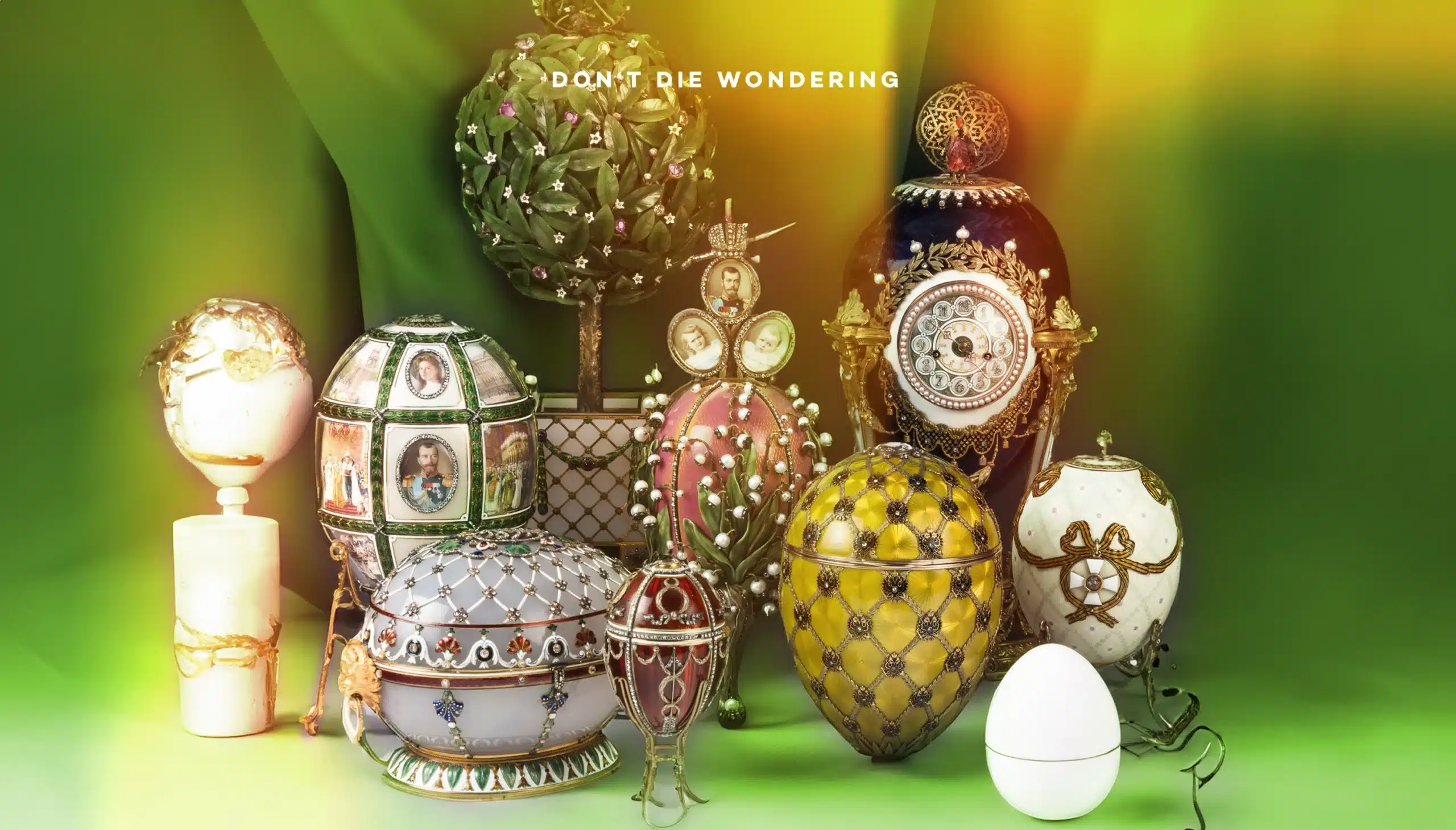Once upon a time, in the land of vodka and vast landscapes, a jeweler named Peter Carl Fabergé decided that the world needed more bling.
With a spare 6 million dollars you could buy a house. An expensive watch. Several cars… Or an egg. Priced at an estimated minimum of $25,000, Fabergé eggs are not the kind you can crack, boil or have with your breakfast toast. Instead, these eggs are kept behind sealed vitrines, encased as historical displays of wealth.
And yet, most people couldn’t tell you why they are so famous, or so overpriced. So what’s the deal?

History
The history of Fabergé Eggs begins with the Russian Imperial family. These ornate creations were the brainchild of Peter Carl Fabergé, a master goldsmith and jeweler to the Russian Imperial Court, who first crafted these unique items under the commission of Tsar Alexander III in 1885, intended as a one-off Easter gift from Tsar Alexander III to his wife, Empress Maria Feodorovna. Keeping the bar high.
The first egg, known as the “Hen Egg,” was crafted from gold with an enameled shell that opened to reveal a matte gold yolk. This, in turn, contained a gold hen that also opened, revealing a miniature imperial crown and a ruby pendant. The Empress was so delighted by this gift that it became an annual tradition, with Fabergé given complete creative freedom for future eggs, the only requirement being that each contained a surprise.
The Expansion
Following the death of Alexander III in 1894, his son, Nicholas II, continued the tradition, presenting eggs not only to his mother but also to his wife, Alexandra Fedorovna. Between 1885 and 1916, the House of Fabergé produced 50 Imperial eggs, each more intricate and elaborate than the last. These eggs often celebrated events within the Imperial family or commemorated milestones of the Russian Empire.
Beyond the Imperial Family
The fame of the Imperial eggs led to commissions from wealthy private clients who desired their own Fabergé creations. These included the Rothschilds, the Duchess of Marlborough, and the Yusupovs, among others. While these non-Imperial eggs were crafted with the same exquisite attention to detail, they were often less elaborate than their Imperial counterparts.
The Fall of an Empire
The Bolshevik Revolution in 1917 marked the end of the Romanov dynasty and the cessation of the Fabergé egg tradition. The Fabergé workshops were nationalized, and many eggs were confiscated or sold abroad as the new Soviet government sought to dispose of the treasures of the former Imperial family. In the chaos, some eggs were lost to history, while others resurfaced in the collections of museums and private collectors around the world.

Notorious Owners
From Russian tsars to the nouveau riche, the owners of Fabergé Eggs read like a Who’s Who of “Too Much Money, Too Little Sense.” After the Bolsheviks decided they had enough of imperial extravagance, these eggs scattered across the globe. Some ended up in the hands of oligarchs like Viktor Vekselberg, who probably uses them as fancy paperweights. Others have graced the collections of the rich and famous, from the Rothschilds to the Rockefellers, proving that nothing says “I’ve made it” quite like owning a ridiculously expensive piece of Easter decor.
Fabergé Eggs and The Media
The Fabergé Egg, once a high-art symbol of luxury and excess, is now idealised and known by the masses. They’ve been the MacGuffin in spy novels and heist movies, the subject of breathless documentaries, and even got a shout-out in “Ocean’s Twelve.” Think of them as the Kardashians of the antique world: famous for being famous, incredibly ornate, and somehow always in the spotlight.
The media loves a good Fabergé egg story, whether it’s a lost egg turning up in a Midwestern flea market or the latest oligarch adding one to their collection of extravagant baubles.
Is it Worth Investing in a Fabergé Egg?
So, you’ve got a spare few million burning a hole in your pocket, and you’re thinking, “Should I buy a Fabergé egg?” Well, unless you’re planning to start your own country or you’re really into egg-shaped objects, maybe think twice. Sure, they’re beautiful, historic, and the ultimate conversation starter (“Did I mention I own a Fabergé egg?”), but they’re not exactly liquid assets. Plus, there’s the small issue of authenticity; for every genuine Fabergé, there’s a dozen fakes floating around. So, unless you’ve got money to burn and a passion for egg-centric art, you might be better off investing in something a little more practical. Like a yacht. Or a small island.
In conclusion, the world of Fabergé eggs is a rabbit hole of luxury, history, and sheer opulence that’s as fascinating as it is financially dizzying. Whether you’re an aspiring oligarch or just someone who appreciates a good egg, the story of these imperial trinkets is a crackin’ good tale of excess, artistry, and the lengths to which people will go to own a piece of history. Just remember, if you’re planning to invest, maybe don’t put all your eggs in one basket.


